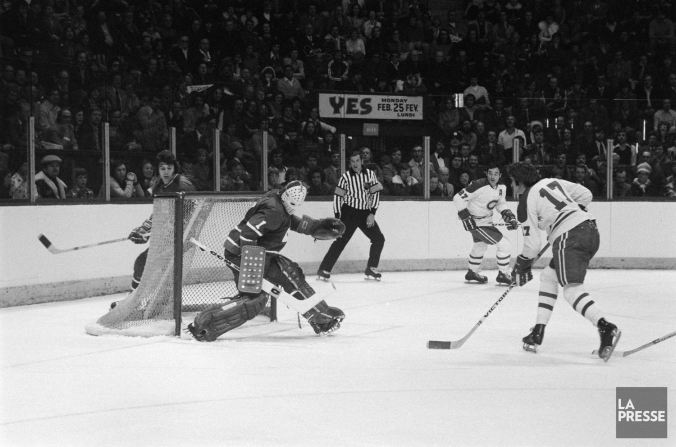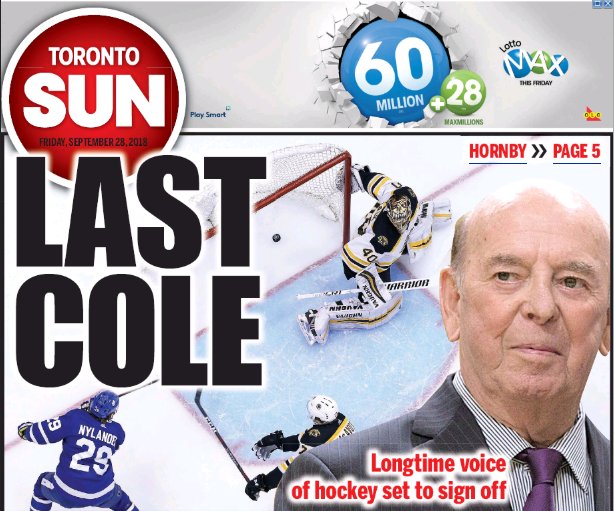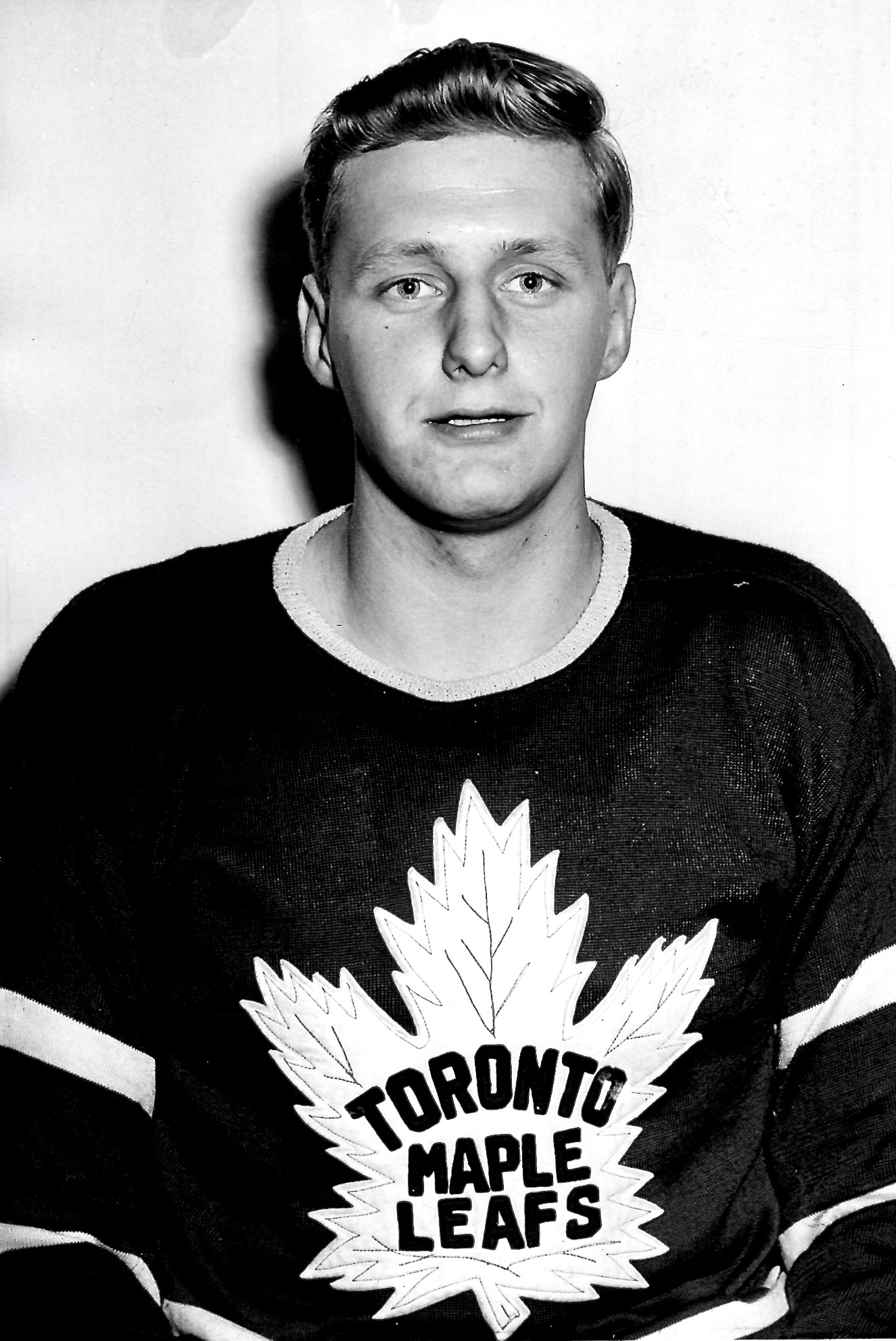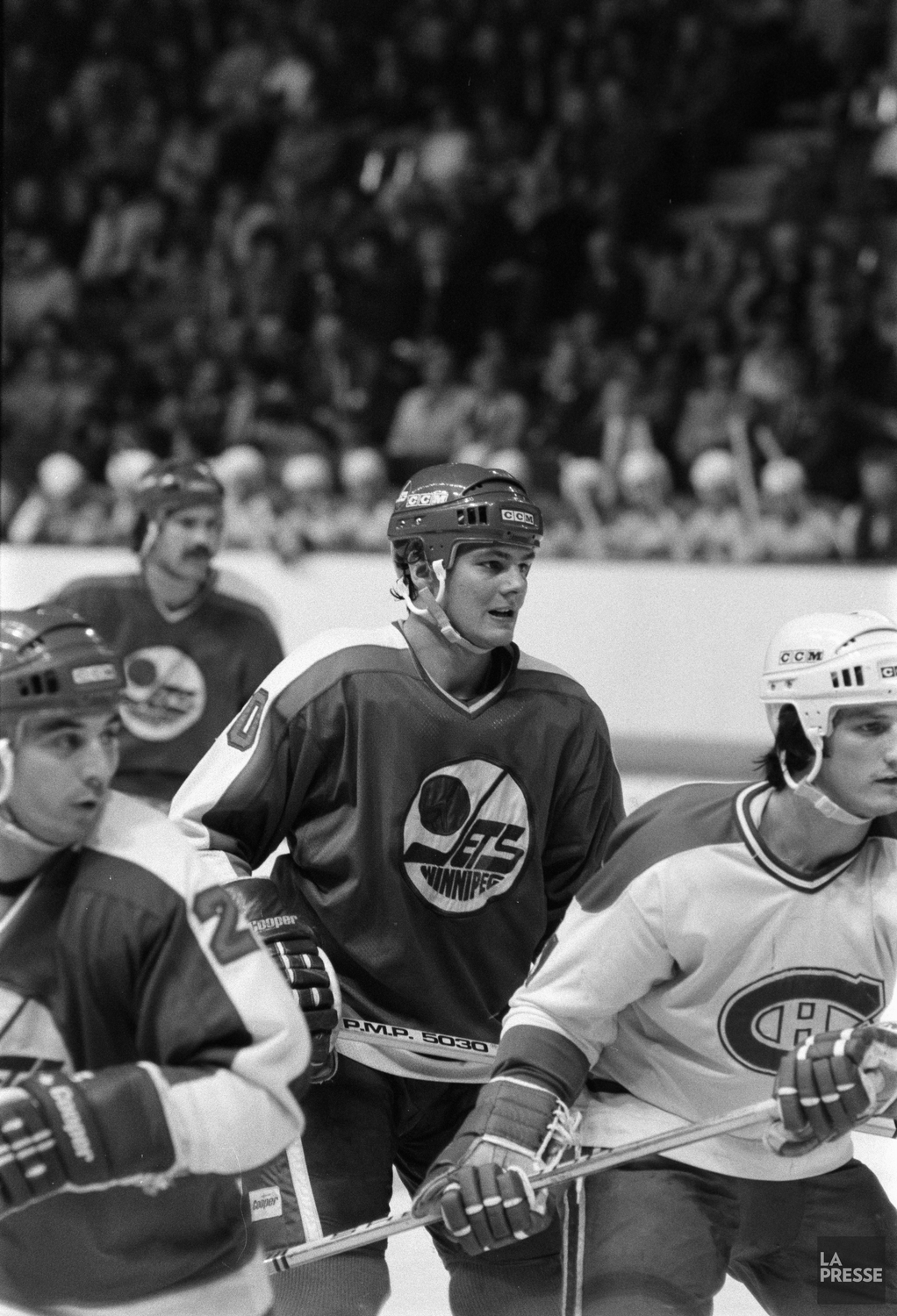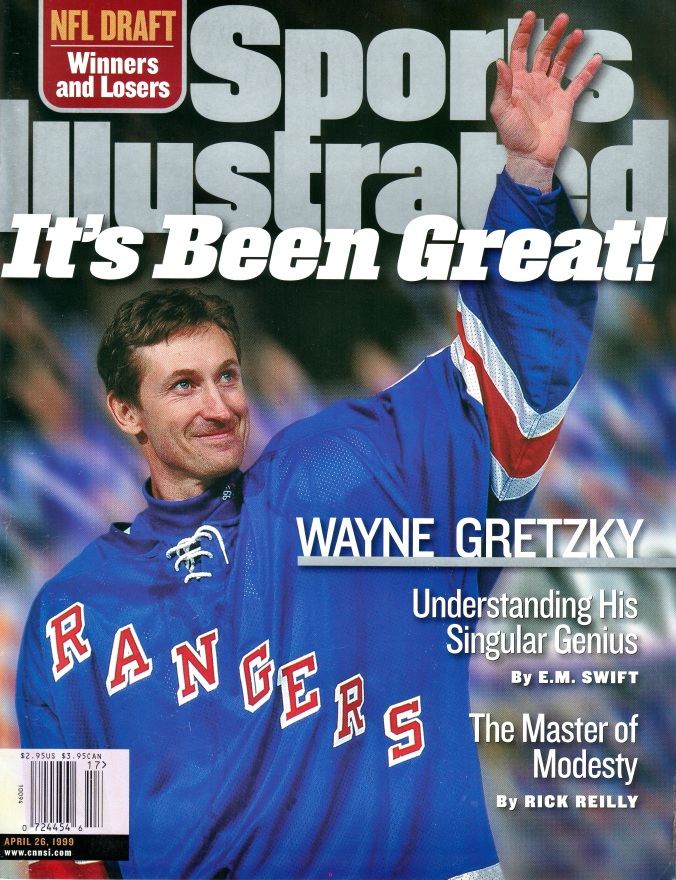
Danger Close: Toronto’s Baldy Cotton attacks Tiny Thompson’s Bruin net on the night of March 30, 1935, at Maple Leaf Gardens. The Bruin by him, #2, is Eddie Shore.
“It was a wild spot for a minute or two — few blows, but lots of hot talk and wrestling.”
It was on the night of Saturday of March 30, 1935 that the Toronto Maple Leafs dispensed with the Boston Bruins in a Stanley Cup semi-final, earning the right to play the Montreal Maroons in the finals (Maroons won). In the decisive game against Boston, the Bruins took a first-period lead through Red Beattie. Toronto tied it in the third through Baldy Cotton — or thought they did.
“Leaf players threw their sticks into the air,” wrote Lou Marsh of the Toronto Daily Star, “and hugged each other. The crowd stood right up and a blast of cheers split the air like an explosion. Hats flews.” But — no goal. Referee Ag Smith ruled that Cotton was in Tiny Thompson’s crease. Chaos ensued. The Leafs rushed Smith, the Bruins mobbed the Leafs. Marsh:
Cotton jabbed Thompson in the mouth and cut his sore lip. Thompson fought back. Cotton tore free and raced at the referee. He was a wild man — berserk. Players clinched and wrestled and jabbed at each other and pulled the official around.
When the fury abated, Cotton and Boston Peg O’Neil were assigned majors by referee Smith, “for fighting,” as Marsh wrote, “— or just because.” (Cotton, he pointed out, was fighting Tiny Thompson.) Boston’s Babe Siebert got an extra two for leaving the penalty box during the fight.
On the ensuing Toronto powerplay, Pep Kelly scored, with assists to Joe Primeau and Charlie Conacher, sending the game to overtime. That didn’t last long: the same combination, Kelly from Primeau and Conacher, ended the game, and the series, which finished 3-1.

Chaos Ensued: The brouhaha following Baldy Cotton’s disallowed goal. At right, that’s Tiny Thompson with Leaf #9 Charlie Conacher and (I think) Charlie Sands. Leafs’ #10 (helmeted) is Joe Primeau.
(Images: City of Toronto Archives, Globe and Mail fonds 1266, items 36271 and 36273)
